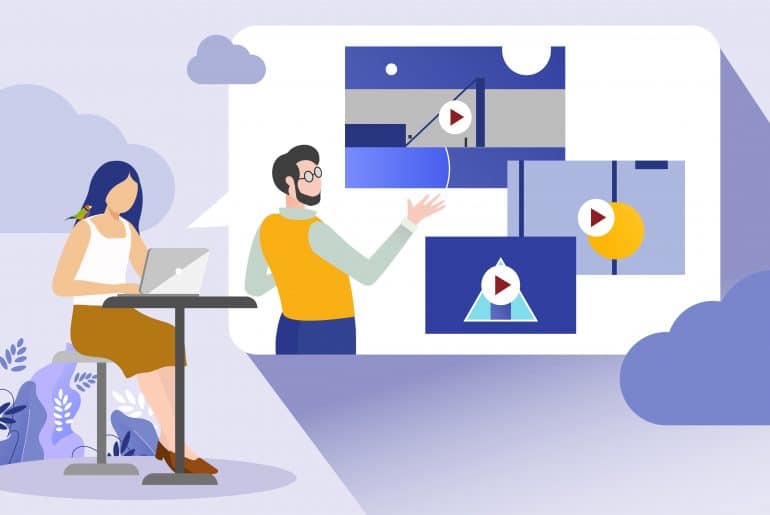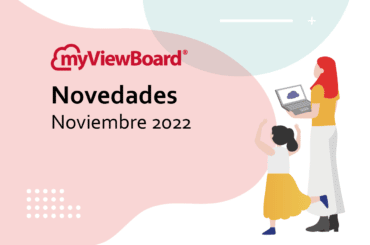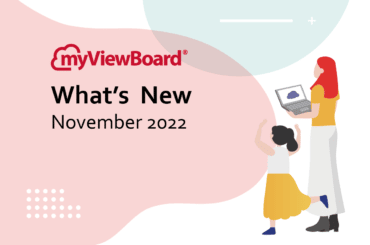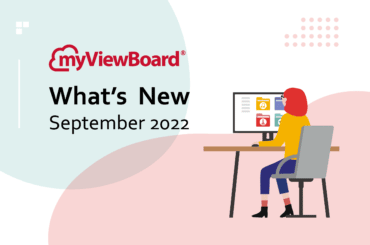This post is also available in: Español (Spanish) Français (French)
The global pandemic has forced the closure of schools and businesses around the world, for how long nobody really knows. While many are treating their time at home as a “stay-cation,” parents of children suddenly on a long-term vacation as well as adults who are seeking to upgrade their skills are turning to online education, including video.
Even before the pandemic struck, educational video was catching on in a big way, with some 92% of teachers in the United States saying that they use video to supplement lesson plans. Video offers numerous benefits in education. Humans are visual creatures, and video can help students to visualize abstract or complex subjects more easily than text. Huge chunks of the brain are dedicated to processing visual stimuli, around 30% of the brain’s total capacity, in fact. Research indicates that images go straight from the eyes to long term memory, while text takes a more circuitous route first to short-term memory and then to long term memory.

In fact, according to some studies, while only 10-20% of information received through speaking or text was retained after three days, a whopping 65% of information expressed through visuals was retained. Another study showed that an illustrated text was 9% more effective than text alone when testing immediate comprehension and 83% more effective when the test was delayed
Video can also help students to relate better to the topic at hand and will often foster a more positive learning environment.
Convinced? Great! But how can those looking to continue their education at home through self-study effectively use video?

Avoid TMI
Video provides excellent opportunities to engage learners of all ages but not all videos are equally effective. Cognitive Load Theory in education suggests that for real learning to occur, information must pass from the “working memory,” which is the part of memory that is focused on what is happening in the moment, into “long-term memory,” which is retained forever.
While long-term memory is effectively limitless, working memory can only deal with a limited amount of information at any given moment. This has powerful implications for using video for educational purposes. Any learning experience, including educational video, has three components: intrinsic load, which is the information being introduced; germane load, which is the level of knowledge the learner already has that enables the introduction of new information; and extraneous load, which is extra information that does not contribute to learning.
While video is intrinsically engaging for visually oriented people, many educational videos include lots of music, jokes, gags, laugh tracks, etc., which can simply overwhelm the viewer and distract from the learning process. On the other hand, sometimes the intrinsic load of educational videos will simply be too much to be successfully absorbed by the learner. Other videos might require a higher level of prior knowledge – germane load – than the viewer actually possesses. All of this leads to cognitive overload, or in other words, Too Much Information (TMI), and an unsuccessful learning effort.

Keep It Short
Major studies have been conducted that examine the amount of time that students actually pay attention to an educational video, analyzing millions of video-watching sessions by child and adult learners. These studies observed that for videos of 6 minutes or less, nearly all students watched the entire video. After 6 minutes, however, rates of attention taper off. For videos ranging from 9-12 minutes, only half of students watched the entire video. while the average attention time with videos of between 12-40 minutes was only 20%.
In fact, the research indicates that no matter how long the video is, students will mostly only watch for about 6 minutes. Therefore, it probably means that self-learners will want to limit the length of their videos to around six minutes, and in fact, many online learning sites limit video presentations to around this amount of time. On the other hand, many highly valuable educational videos, including documentaries, are much longer than 6 minutes. In this case, self-learners might want to take multiple breaks at around the 6-minute mark in order to review to ensure maximum understanding and retention.

Variety Is Healthy!
As attractive and interesting as video is, remember that there is no single solution for every learner and that variety of learning modes and methods produces the best results. Rather than a replacement for books – or charts, graphs, spreadsheets, etc. – video is just one of many tools now available for eager learners to maximize their rate of comprehension and retention. Many online courses are built on video but likewise include supplementary readings, charts, and written quizzes, tests, and exercises. So don’t just rely on video for your stay-at-home quarantine education, use all of the resources at your disposal.
Want to learn more about video-assisted learning? Check this out: Video-Assisted Learning: Worth a Million Words
Explore the Diverse Online Education Video Ecosystem
The online education ecosystem is rich and varied and offers so much opportunity for eager learners. For young learners, staples such as Sesame Street, Blue’s Clues, Dora the Explorer, and others have been demonstrated to have a real learning impact. For older students, YouTube offers multiple education channels, just go to YouTube/education. Khan Academy is also highly popular, as is TEDEd. For adults and older students, multiple online courses are available for free or low cost, including Coursera and Udemy, and many of the world’s top universities, including Harvard, Stanford, and MIT offer free online courses. Enjoy your time indoors by exploring the world of online video learning!
Want to add video to your lessons? Try our curated, ad-free videos at myViewBoard Clips. Or learn more about video-assisted learning.




